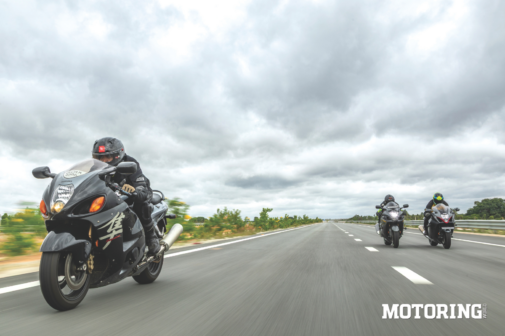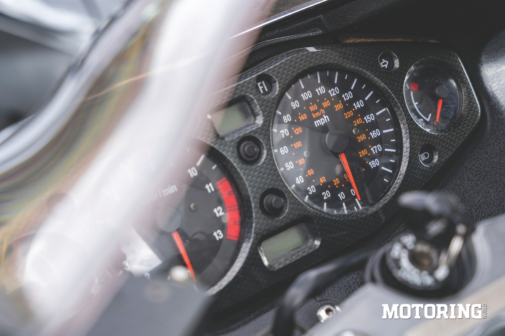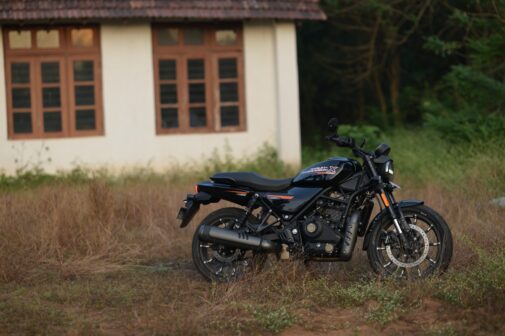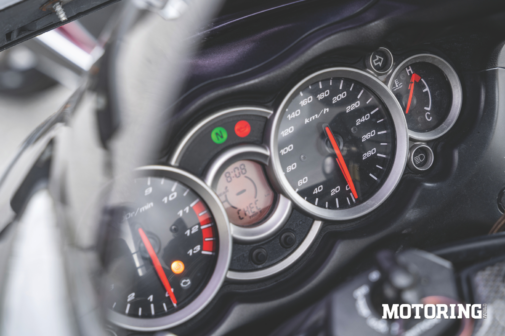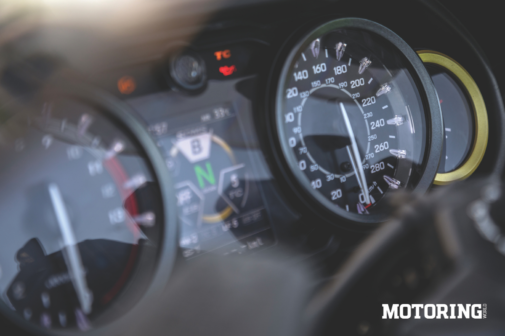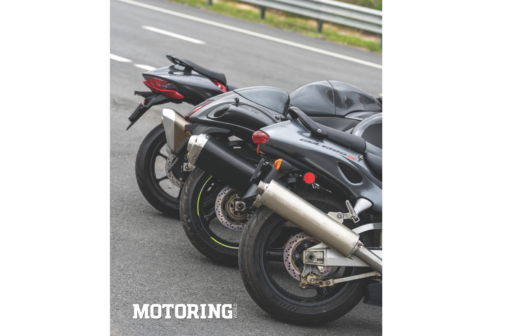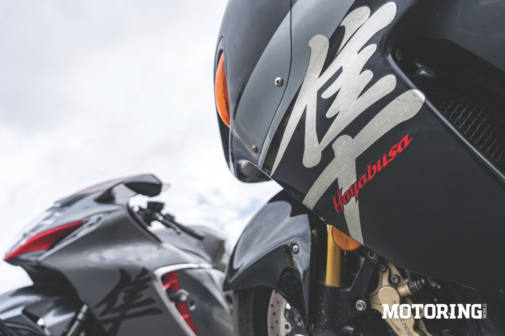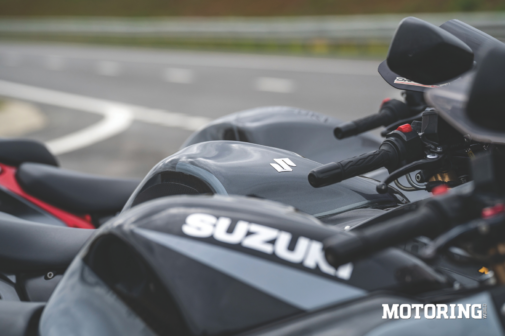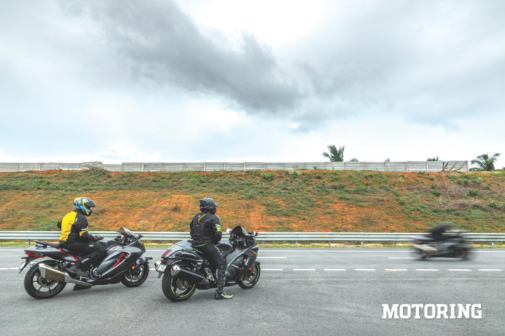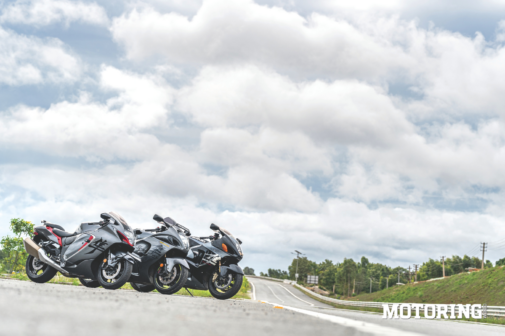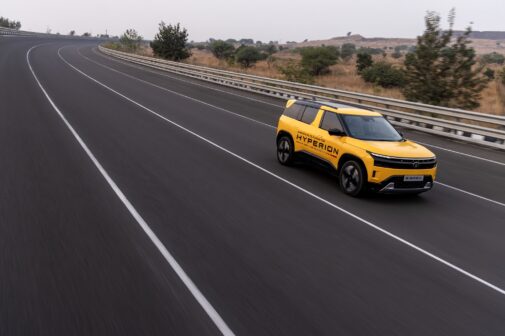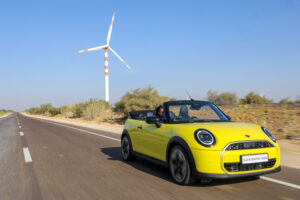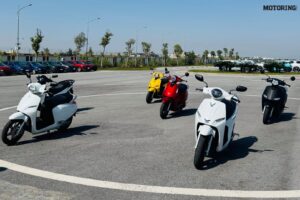I can’t make up my mind about the Suzuki Hayabusa. On the face of it, it’s a slightly boring and overweight motorcycle built with so much clinical finesse, it just can’t stir up a riot of emotions. Is it still the fastest motorcycle in the world? Is it, instead, the world’s most aerodynamic exercise in conformity? Surely, we haven’t witnessed the end of the Hayabusa, no? At this point, I had to hit the brakes from about 220 kph, so I decided to return to that thought later.
Textbook Hayabusa moment. Since its very inception, it has assumed the role of being motorcycling’s brand ambassador of effortless speed. It’s why it came into being — to be the world’s fastest motorcycle, something it accomplished all too easily back in 1999, wafting past the Kawasaki ZX-12R and the Honda CBR1100XX Blackbird that previously held that title. Ever since, though, that accolade itself has been swept off the table, with a gentlemen’s agreement limiting all top-speed ambitions to 299 kph. What, then, does that leave for a Hayabusa to do? Okay, I’d better slow down now.
The Suzuki GSX1300R Hayabusa, to state its full name, is part phenomenon, part engineering masterclass. A product of absolute aerodynamic surrender, the ’Busa has gathered a robust fanbase over the years not only for its bragging rights, but for translating into a shockingly sublime motorcycle. Surround yourself with ’Busa owners — as I did, on a fine morning in Bengaluru — and you’ll never hear the end of how easy it is to ride just about anywhere. I had, in ascending order of the generations they own, Hafeez ‘Dr. Busa’ Khan and generous friends in the form of Karan Lokhande and Halley Prabhakar, do exactly that to my inadequate eardrums for the tenure of a day. By the end of it, I was convinced I had to buy one. Which one, though? Okay, I’d better park now.
The first-gen ’Busa attracts the romantics. Its form, objectively the most ungainly of them all, evokes unbridled nostalgia and it is, in fact, the only real 320-kph motorcycle here anyway. Completely devoid of electronic rider assists (ABS? You’re kidding, right?), the first-gen ’Busa is an analogue mammoth, solely reliant on aero and brute force. Designed in a wind tunnel, this Hayabusa was designed to forge a slippery hole through the air around it and, to its makers in Hamamatsu, nothing else mattered.
It took Suzuki seven years to come up with the next generation of the ’Busa, something it did to rather good effect. It wasn’t a stark departure from the full-fat proportions of the original and so, despite its completely different lines (which still cut a familiar silhouette), it garnered the same kind of reverence. This, too, was a motorcycle that kept its distance from assists, but it did offer three riding modes and, in later years, sprouted ABS as well. It was also the more taut of the two, feeling meatier and more fierce even as it lost a bit of its top-speed ceiling to regulations.
The third-gen ’Busa, I decided, was therefore a great starting point for the day. It comfortably complies with all of the present day standards, coming equipped with contemporary responses and electronic interventions alike. It’s also the tamest of the lot — yes, we’re still talking about a 185-bhp inline-four here. Being quite mindful of that statistic, I eased out the clutch and, quite instantly, settled into a cruising rhythm, the muted bass of its exhaust note providing a sweet soundtrack to the proceedings. The access-controlled road ahead was clear well into the horizon and the ’Busa betrayed no sense of being rushed, even as its iconic analogue speedometer needle simmered around a three-digit number.
You need to spend all of five minutes in its seat to understand what propels its popularity — it’s an easy, comfortable, seriously fast bike that’s refined to a level where it comes across as uneventful. Boring? I wouldn’t go so far because, when you mean business, it delivers. Take it to a drag strip, pick a launch control mode (in the past, I’ve felt brave enough only for Mode 2, which sets it up for a 6000-rpm launch; Mode 3 launches at 8000 rpm, Mode 1 at 4000 rpm), and watch it shoot forward in a manner that completely belies its form. The Hayabusa isn’t the quickest accelerating bike in the world, but nothing else feels half as tranquil.
Not even the second-gen ’Busa, for that matter. It’s the most powerful, with its 1340cc inline-four pushing 194 bhp and it feels particularly raw, given that it had far fewer emissions regulations to comply with as opposed to its successor. The second-gen saw Suzuki extend the original 1298cc engine’s stroke by 2 mm, bringing up its displacement while adding roughly 20 bhp to the mix, bringing its power output tally up to 194.3 bhp. While it’s a tad heavier, the second-gen ’Busa feels pronouncedly more alive — something I experienced first-hand under a thunderous sky that mimicked the shade this 2020 specimen came wearing.
It’s unlikely that this ferocity was intended, but Suzuki, fortunately, did nothing to impede it. As a result, it’s the second-gen ’Busa that appears to be the most sought after, at least based on hearsay. Sold in India between 2009 and 2020, the Hayabusa cemented its popularity admirably, also getting a few updates along the way. In 2013, Suzuki finally equipped it with ABS and, from 2016 onwards, began assembling the Hayabusa in India — a milestone reflection of the phenomenon it had grown to become. For now, astride the second-gen ’Busa, I was in a state of absolute reverence as it rocketed down the impeccable tarmac beneath us, its exhaust note bouncing off the armco. I hadn’t intended to be as liberal with my throttle wrist, but the sheer reserves of power on this ’Busa along with its stereotypical ease meant I frequently ventured into speeds I shouldn’t be writing about. You’re free to guess, though.
What set the tone for the kind of performance I’ve described above is, of course, the very first Hayabusa. It’s a motorcycle that doesn’t explicitly feel its age – that’s saying something, seeing as it is exactly as old as this magazine is — and it leaves as much of a mark each time we come up with a new question to pose at it. It’s a motorcycle to which I lost my 320-kph virginity a few years ago and among its most memorable qualities is just how exaggeratedly it underplays the speeds it’s capable of. I do have an affiliated memory of locking its front wheel under hard braking, though, and having moved on from such dramatics (Don’t believe him for a bit — Kartik), I stayed mindful of how fast I dared to ride it.
Fortunately, the first-gen ’Busa feels meaty enough at any sort of speed and only over a sweeping curve did it feel a tad conservative. It’s, by far, the comfiest of the lot, though, its riding position being almost entirely encouraging of touring. Oh, how I’d love to slap a pair of aero-panniers on and glide across to pointless milestones! That’s another thing about the first gen Hayabusa — it wasn’t about its top speed alone; it was a motorcycle you could keep pinned at its peak for hours on end. Okay, at least till you ran its 21-litre fuel tank dry.
No, I know you aren’t convinced. Here’s what I didn’t tell you. I’d ridden this ’Busa home a day prior to this superlative gathering and that had involved riding it across the breadth of Bengaluru in peak traffic, on an unusually toasty day. It was the kind of day you wouldn’t want to venture out to buy bread on your electric scooter, let alone on the fastest production motorcycle in the world. Yet, here I was, crawling through traffic that imprisoned me in first gear, with my unreliable sense of direction ensuring I reached home an hour and a half later, through an unscheduled dust storm and a drizzle. Okay, so the temperature gauge had shot up significantly (trivia: the first-gen gets one radiator fan, unlike two on later models), but I wouldn’t dare say I was in unpalatable discomfort. This, for a motorcycle no one could ever beat in its singular emphasis on speed, is nothing short of sensational.
Sure, the Hayabusa somehow finds a way to extend its relevance with every new generation, but it’s the lasting imprint of the first that deserves the loudest round of applause. It’s the first-gen ’Busa that shouldered the risk of Suzuki’s ambition, powering its way through the brickbats that came its way for its unconventional form, and creating a universal appetite for a kind of motorcycle there still isn’t a credible counter to, 26 years since. Yes, Kawasaki tried to great effect with the ZX-14R and also the H2, both thoroughly incredible machines, but it’s already evident how much kinder history is going to be to the Hayabusa in comparison.
While nostalgia is guaranteed to shower the Hayabusa with reverence, is there a place for another one like it in the future? For one, it enjoys a fair demand in the 48 countries it’s sold in; in the last year alone, Suzuki sold Rs 85 crore worth of Hayabusas in India, for example, with its tally of 511 units. In business terms, then, it’s a no brainer.
The Hayabusa isn’t a commodity, though. It’s an icon, a very significant chapter of modern motorcycling history that has, in recent years, been up against regulations committed to seeing motorcycles of its ilk to the doorstep of obsoletion. Perhaps, Suzuki will find a way to keep that nameplate alive — unless it finally slips up and accelerates its irrelevance by its own doing, that is. It’s not as if the Hayabusa is new to divided opinions anyway, right? Either way, it’s among the world’s most brilliant motorcycles, one that will live on even long after it’s dead.










